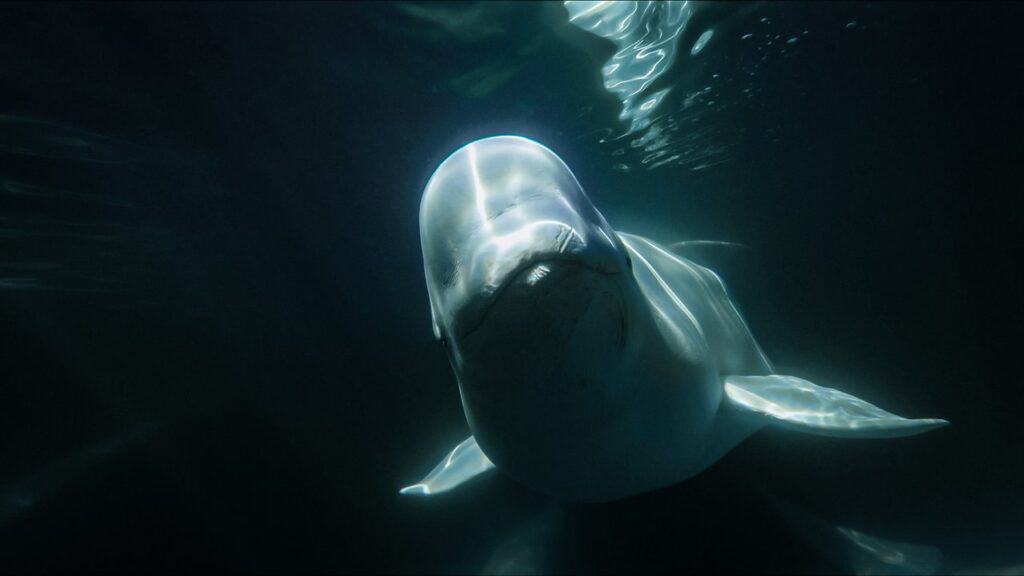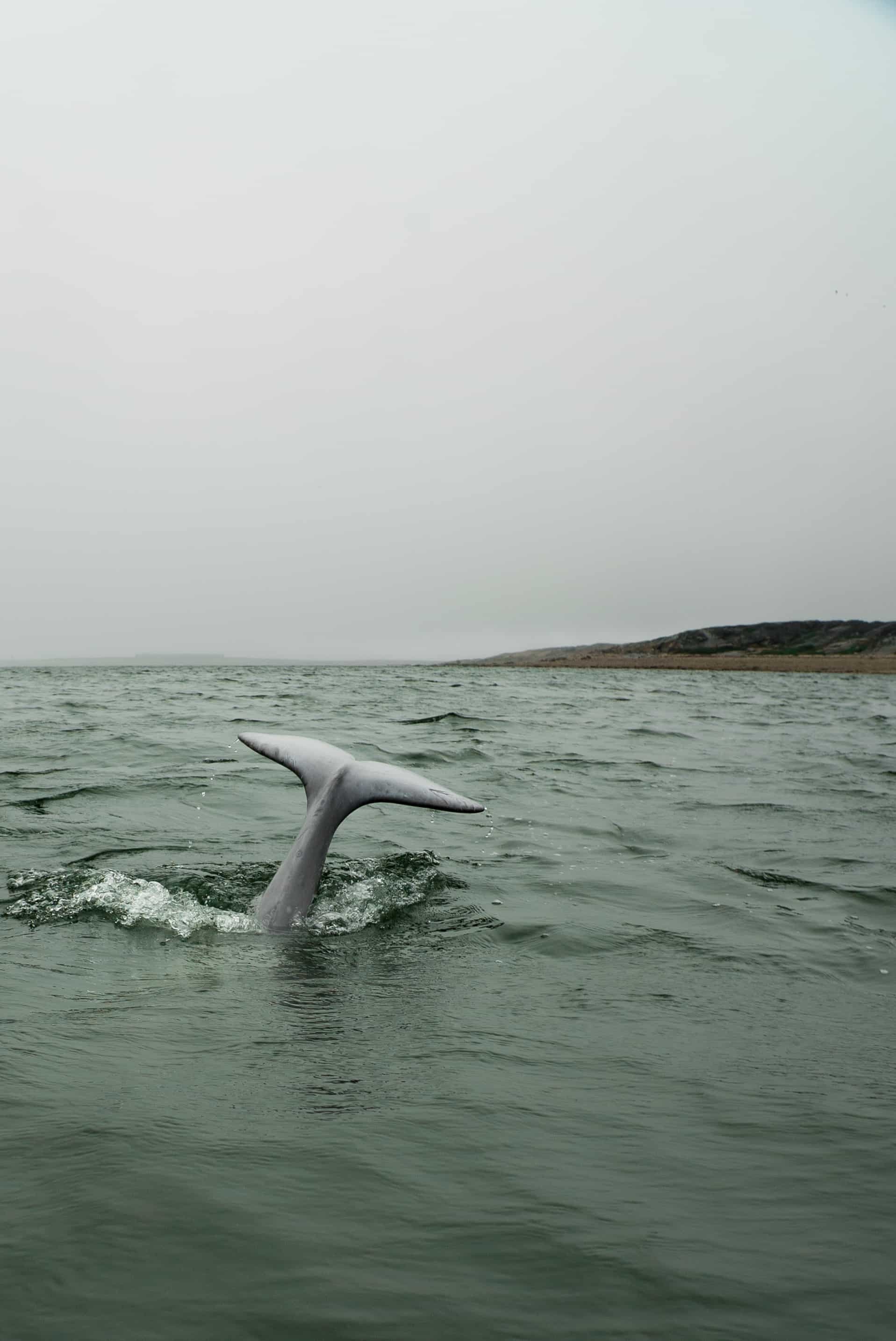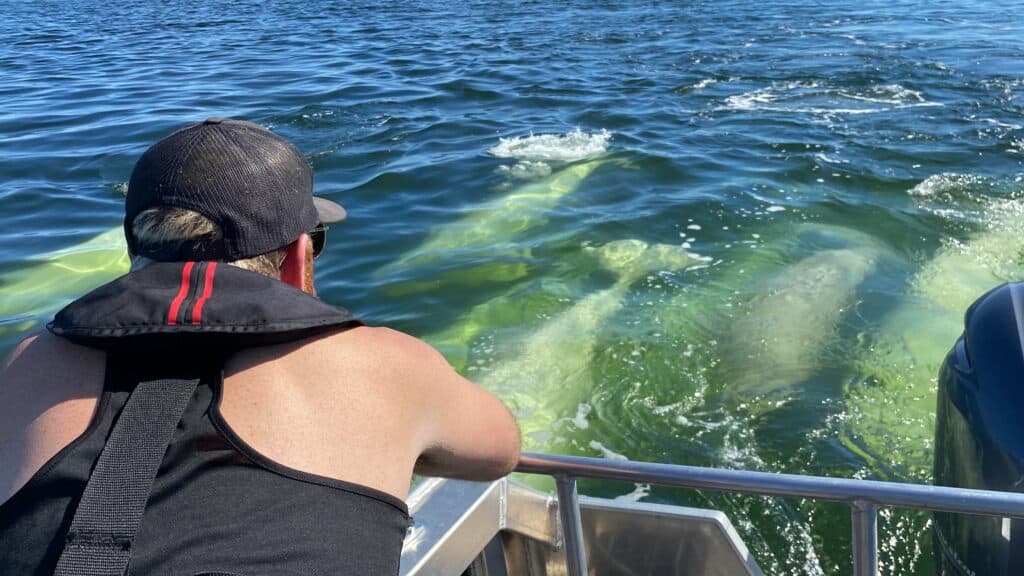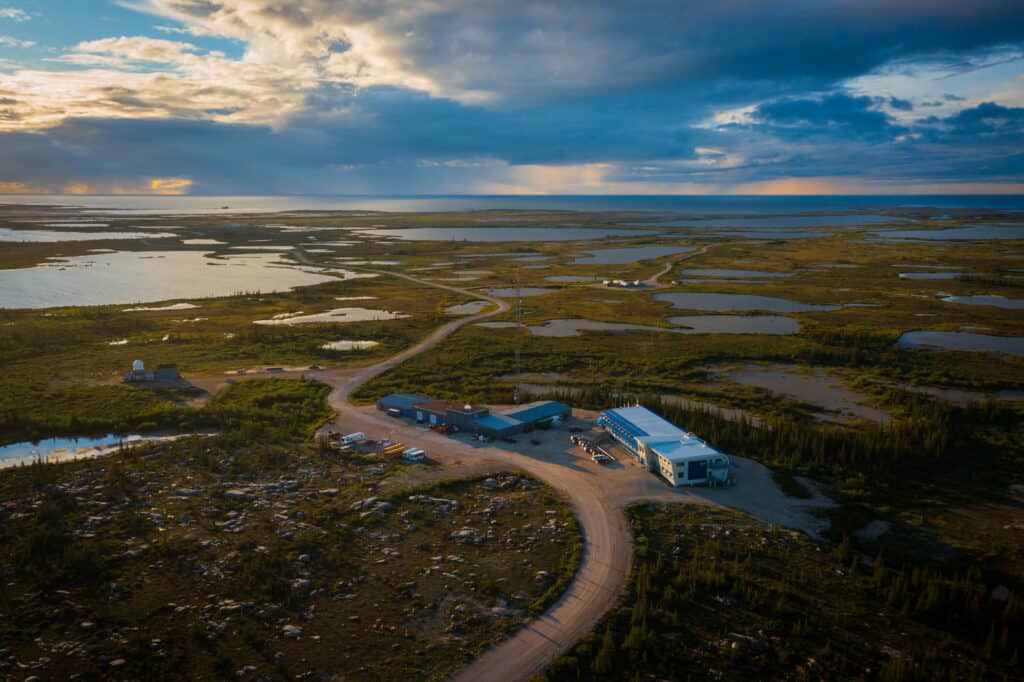All about beluga Whales
Beluga whales, often referred to as the “canaries of the sea,” are remarkable creatures that have captured the hearts of many. These marine mammals, with their distinctive white color and playful nature, are a sight to behold in their natural habitat. Let’s dive deeper into the world of beluga whales and answer some of the most commonly asked questions about them.

Where Do Beluga Whales Live?
Beluga whales predominantly inhabit the cold waters of the Arctic and subarctic regions. These marine mammals are specially adapted to life in the icy environments of the Northern Hemisphere. During summer months, they are often found in shallow coastal waters, estuaries, and river mouths, such as the Churchill River estuary, where they seek warmer temperatures, give birth, and feed. This migration makes the Churchill area a hotspot for beluga whale watching, especially during the second half of July and the first half of August.
Join us at the Churchill Northern Studies Centre (CNSC) for our Wild Planet Learning Vacation and witness the thrilling sights (and sounds) as the largest population of belugas in the world makes the Churchill area their summer home!
As the winter approaches and sea ice begins to form, belugas migrate to offshore areas, navigating through open leads and polynyas (areas of open water surrounded by ice). Their preference for diverse habitats, ranging from deep offshore waters to shallow coastal areas, highlights their remarkable adaptability.

What Do Beluga Whales Eat?
Beluga whales are opportunistic feeders with a diverse diet that varies based on their location and the season. Primarily carnivorous, their menu includes a wide array of marine organisms, from fish species such as salmon, herring, and cod, to various invertebrates like shrimp, squid, clams, octopus, and sea snails.
Belugas have a set of well-adapted teeth that allow them to grasp their prey, which they usually swallow whole. Their powerful swimming capabilities allow them to dive to significant depths to forage for food. Studies of Arctic Ocean beluga populations have recorded them diving to depths of up to 900 m (2,950 ft).
Are Beluga Whales Friendly?
Belugas are known for their curious and friendly nature. They are among the most vocal whales in the world, often emitting a series of chirps, clicks, and whistles, and have earned the nickname “canaries of the sea” for this reason. Their unique anatomy, which includes a flexible neck due to unfused vertebrae, allows them to turn and look directly at objects, including boats and humans. This often gives the impression of a playful and inquisitive demeanor.

Do Beluga Whales Have Knees?
No, they do not, but if you thought otherwise, you are not alone. The misconception of beluga whale knees is a popular one, thanks to many a striking image of belugas mid-swim. The formations that often resemble knees beneath skin are in fact abdominal fat pads that are tensed during some swimming maneuvers to help provide stabilization and control. This unique anatomical feature is certainly an arresting sight, and some believe it may even have perpetuated mermaid myths among sailors.
Beluga Whale Intelligence
Beluga whales are renowned for their intelligence and sophisticated communication abilities. Their vast repertoire of vocalizations is used for echolocation, navigation, and complex communication systems that we still don’t fully understand. Their brains, especially the neocortex responsible for sensory perception, motor commands, and conscious thought, are intricately folded, indicating a high degree of cognitive abilities.
This cognitive prowess is further showcased in their playful behavior, problem-solving skills, and ability to mimic sounds, even those outside their natural environment. Their social interactions — both within their pods and with other marine species — also underscore their intellectual capacities, and make them one of the most intriguing marine mammals to observe and study. Here at the CNSC, we are doing just that! Donate today to support our research on belugas, arctic conservation, and more.
Are Beluga Whales Endangered?
Beluga whales face varying levels of threat depending on their specific populations and regions. The International Union for Conservation of Nature (IUCN) classifies the beluga whale as “Near Threatened” on a global scale, indicating that they could become endangered if circumstances threatening their survival and reproduction continue. Some specific populations, such as Alaska’s Cook Inlet subpopulation, are critically endangered due to factors including pollution, habitat degradation, climate change, and increased human activities in their habitats.
The loss of sea ice in the Arctic, a consequence of global warming, poses a significant threat to belugas’ natural habitats. Efforts are being made globally to monitor beluga populations and implement conservation measures to protect these iconic white whales and their habitats.

Experience the Magic of Beluga Whale Watching With the Churchill Northern Studies Centre (CNSC)
If you’re intrigued by these magnificent creatures and want to witness them in their natural habitat, consider joining the Wild Planet Learning Vacation offered by the Churchill Northern Studies Centre (CNSC). This program offers a unique opportunity to watch the largest population of belugas in the world while also exploring the diverse habitats of the Churchill area. From tundra walks to boreal forest explorations, you’ll be immersed in the natural wonders of the region, all while gaining a deeper understanding of belugas and subarctic ecology.
Don’t miss out on this chance to connect with nature and contribute to the understanding and sustainability of the North. Book your spot now and embark on an unforgettable journey with the CNSC.
Looking for an alternative with even more whale time and a little less walking time? Check out our Belugas in the Bay Learning Vacation!
The Churchill Northern Studies Centre is an independent, non-profit field station working to understand and sustain the North. We provide accommodations, meals, equipment rentals, and logistical support to scientific and social researchers working on a diverse range of topics of interest in the subarctic. We also facilitate learning programs throughout the year for non-credit learning vacations, university credit courses, and youth programming.
Explore our Learning Vacations to see how you can experience the subarctic in a way that’s meaningful, personal, and unforgettable. Or, donate today to support greater understanding of — and deeper appreciation for — the natural, social, economic, and cultural environments of the North.
Photo Credit to Travel Manitoba, Build Films, and Handcraft Creative
